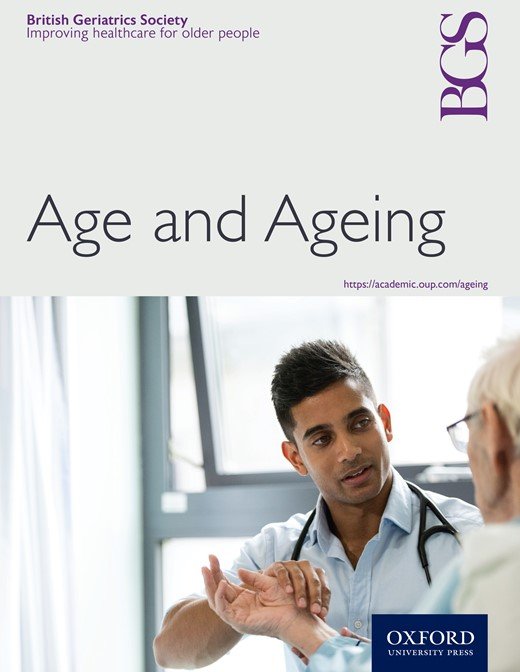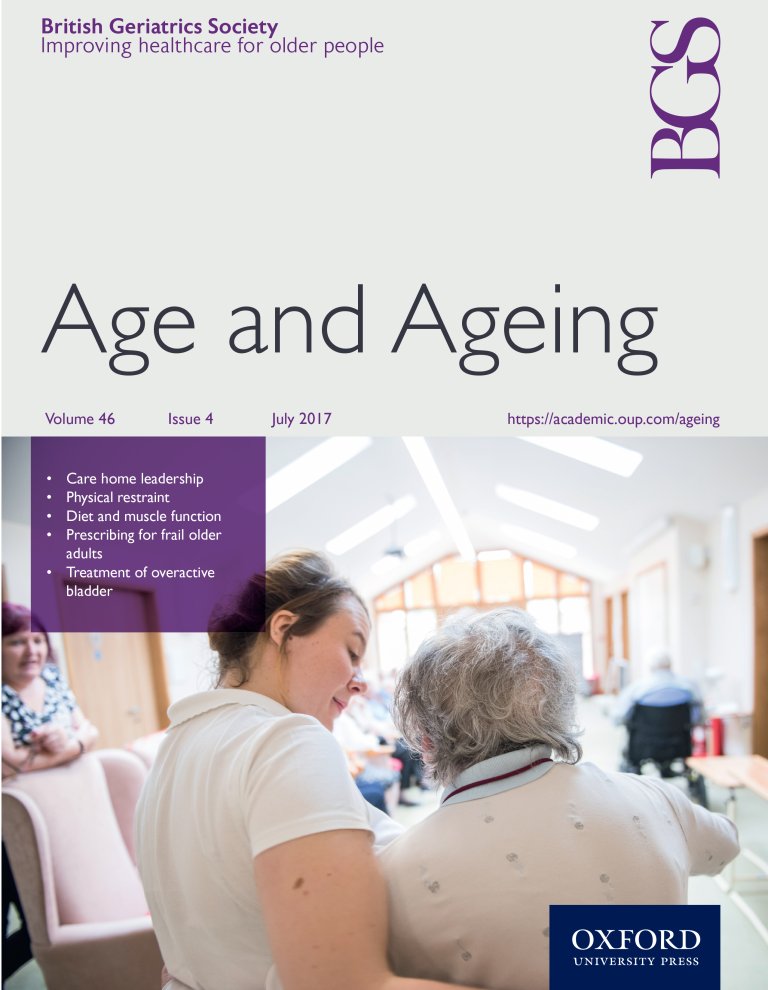Age and Ageing is the journal of the BGS, first published in 1972. It publishes peer reviewed original articles and commissioned reviews on geriatric medicine and gerontology. The journal is published in monthly online issues and all content is archived and available on the journal's main website www.academic.oup.com/ageing
It is a leading international clinical geriatric medicine journal and is highly influential with an Impact Factor of 6.7 and is in the top quartile of its category for Geriatrics and Gerontology journals (ranked 10 out of 54). Content published in Age and Ageing is highly used with over 2.5 million article downloads per year. We are a truly international journal with readers, reviewers and authors from across the world and an Editorial Board representing all global regions.
Journal content includes research, commentary and expert review articles on ageing and clinical, epidemiological, and psychological aspects of later life. More information for authors can be found on the journal website.
All of our content is free to read 12 months after publication and about 30% of our new content is Open Access and therefore free to read without a subscription. We also regularly curate themed collections that are free access for a limited time. Most BGS members have a subscription included in their membership and can unlock subscriber-only content using their BGS credentials.
Age and Ageing is a hybrid journal meaning that standard publication is free of charge but authors have the option of paying an Open Access publication charge (APC) to make their paper freely available online immediately upon publication. Most UK institutions will be covered by a Read and Publish deal which will cover the APC. We can offer a 20% discount on the APCs for members of the BGS.
Read Age and Ageing journal now
Age and Ageing journal can be accessed without registration or subscription. The majority of content is free to read, but the full versions of some newer articles are behind a paywall and can be unlocked with BGS membership credentials or via your institution’s subscription. Visit the journal website and start reading today.
Readers have a number of options for exploring Age and Ageing content:
- Editor’s View: For a digest of the key themes each month, please read the Editor's View articles for highlights, concise commentary and links to his latest pick of Age and Ageing content
- Read the latest issue: The latest issue of the journal is always available to read as an "in progress" issue.
- New Issue Alerts: Subscribe to receive the monthly table of contents directly to your email inbox. Sign up to emails here.
- Themed collections: Curated for you by members of the editorial team and guest authors. Two new collections are launched per year on hot topics, and two more collections are published to accompany the programmes of the BGS conferences. Browse the collections library.
- Browse by topic: The journal arranges its content into 18 broad subject sections in line with the BGS SIG topics:
Dhole-Eddleston prize-winning research
The Dhole-Eddlestone Memorial Prize is funded by a legacy from Dr Manindra Kumar Dhole, a BGS member who died in 1977. The prize is so named to commemorate the anniversary of his marriage with Dr Elizabeth Eddlestone. One cash prize of £1,000 is made each year and announced on 14 January, the anniversary of the date of their marriage. Applications are not accepted. The prize goes to ‘the most deserving published work of medical research appertaining to the needs of aged people’. In practice, the award is made to the paper published in Age and Ageing each year which most impressed the judging panel.
- 2024: Normative values for grip strength, gait speed, timed up and go, single leg balance, and chair rise derived from the Canadian longitudinal study on ageing. Press release.
- 2023: Is comprehensive geriatric assessment hospital at home a cost-effective alternative to hospital admission for older people? Press Release.
- 2022: Recurrent delirium over 12 months predicts dementia: results of the Delirium and Cognitive Impact in Dementia (DECIDE) study. Press release.
- 2021: Probable delirium is a presenting symptom of COVID-19 in frail, older adults: a cohort study of 322 hospitalised and 535 community-based older adults. Press release.
- 2020: Everyday life after a hip fracture: what community-living older adults perceive as most beneficial for their recovery. Press release.
- 2019: Projections of multi-morbidity in the older population in England to 2035. Press release.
A&A themed collections
Several times a year the Editorial Board of Age and Ageing select a topical theme, curate a collection of articles and provide an expert commentary. A selection are shown below and the full catalogue of collections available on the Age and Ageing website.
A&A themed collections
Several times a year the Editorial Board of Age and Ageing select a topical theme, curate a collection of articles and provide an expert commentary. A selection are shown below and the full catalogue of collections available on the Age and Ageing website.




